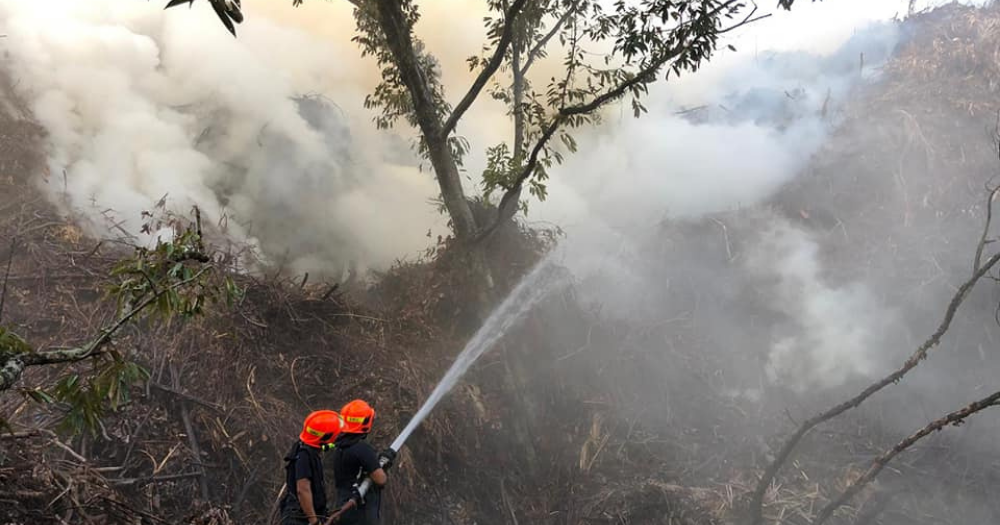Some Singaporeans may have picked up on a burning smell recently.
Your nose is not playing tricks on you but, unlike what some might assume, the smell does not come from regional land and forest fires.
Could come from local vegetation fires
In response to Mothership's queries, the National Environment Agency (NEA) said that it has received reports of this "burning smell" in the past week over some parts of Singapore.
NEA also explained that there have been a few instances of local vegetation fires in the past two weeks. Hence, this could have been the cause of the occasional burning smell in Singapore.
The smell tends to be accentuated at night when wind conditions are normally lighter, NEA added.
Air quality
During the past week, the air quality was not significantly affected.
The 24-hr Pollution Standards Index (PSI) from Feb. 15 to Feb. 24 was in the "Good" to low-end of the "Moderate" range (32 to 67).
During the same period, the average hourly PM2.5 level of 16ug/m3 was slightly higher compared to the average levels of the weeks before.
From Feb. 1 to Feb. 14, the average hourly PM2.5 level was at 11ug/m3.
Overall, the average hourly PM2.5 level remained within the "Normal" band of 0 to 55 ug/m3.
PM2.5 level is the dominant pollutant during haze episodes.
Not smoke haze from neighbouring countries
NEA updated that Singapore and its surrounding region are currently in the dry phase of the Northeast Monsoon.
The dry weather is expected to last till early March.
The drier weather in the past weeks could have contributed to several hotspots in Sumatra, western Kalimantan and northern Peninsular Malaysia.
Localised smoke plumes were observed to emanate from some of the hotspots in Sumatra and Kalimantan.
As the prevailing winds over Singapore are currently blowing from the north or northeast, any smoke haze from Sumatra and Kalimantan is not likely to be blown toward us.
Related stories
Top photo via SCDF/Facebook for illustration purposes.
If you like what you read, follow us on Facebook, Instagram, Twitter and Telegram to get the latest updates.
